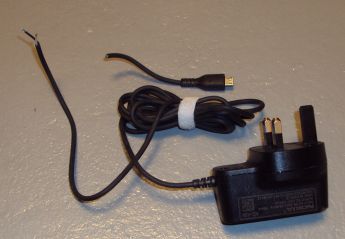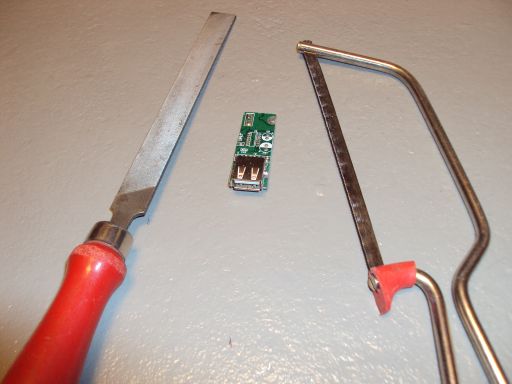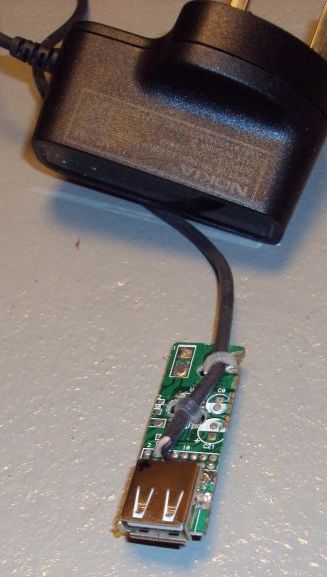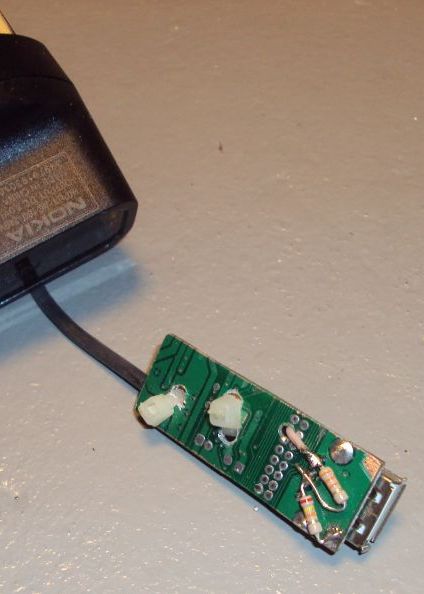updated may 11
If you have an iPod and are tired of having to switch on your PC in order to charge the thing, and you donīt want to buy an expensive USB wall adapter, then this is how you can fix it yourself.
You need a power source that can deliver 5V with at least 500mA, e.g. a Nokia USB charger.
(A normal "dynamo-plug" charger should NOT be used; such a charger delivers constant current rather than constant voltage, so the voltage can get higher than 5V) .
You also need an USB connector; a good way to get this on a piece of circuit board is to cut if out of a scrapped PC motherboard.
(remember to file the sides of the printed circuit board, in order to avoid short circuit of traces in the inner layers.)


For some phones and gadgets with USB-charging capabilities, like older iPhones and iPods, the 2 datapins of the USB connector have to be biased to some fixed voltages, otherwise the phone doesnīt want to charge.
The
official Apple standard is like this:
For 0.5A charge, use 75k to 5V and 49.9k to gnd; separate sets of resistors for both D-pins (2.0V),
For 1A charge, use 43.2k to 5V and 49.9k to gnd at D- (2.7V) / 75k to 5V and 49.9k to gnd at D+ pin (2.0V).
For this I used a voltage divider of 24k to gnd and 33k to +5V, and that gives 2V and works fine.
For newer Apple gadgets you can also just use the
official USB charging standard: just connect D- and D+ together but leave floating (no resistors).
the printed circuit board with USB connector and cable fixation, and the final charger encapsulated with shrink tube:








